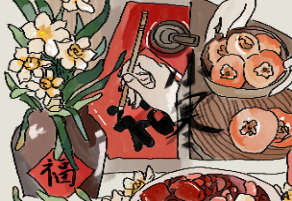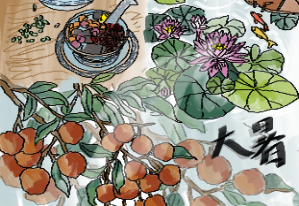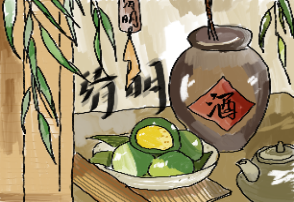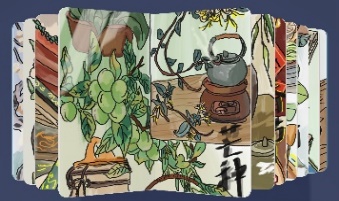1. Introduction
The splendid traditional Chinese culture is the lifeblood of the nation. The profound and extensive Chinese culture reflects the value orientations, moral norms, and intellectual styles of the nation and its people. The power of culture is ever-flowing, and the culture of socialism with Chinese characteristics is increasingly becoming the spiritual support driving the Chinese nation to unite in pursuit of the Chinese Dream, as well as the inexhaustible force propelling the nation's progress. [1]
The splendid traditional Chinese culture is a source of national confidence and heritage. Since the 18th National Congress of the Communist Party of China, General Secretary Xi Jinping has made a series of important statements regarding the inheritance and promotion of splendid traditional Chinese culture. He pointed out, "The splendid traditional Chinese culture is the crystallization of wisdom and the essence of Chinese civilization, the root and soul of the Chinese nation, and the foundation that keeps us standing firm in the global cultural dynamics." In today's world, cultural soft power has to some extent become the constant source of confidence and heritage that enables our country to stand tall in the global forest.
The splendid traditional Chinese culture is the foundation and cradle for young children. In an era increasingly dominated by the Internet, the construction of preschool cultural educational resources is of profound significance, and there is an even greater need to integrate splendid traditional Chinese culture into early childhood education practices. [2] The "Guidelines for Kindergarten Education" emphasize guiding children to actually feel the richness and excellence of the country's culture, inspiring a love for the country in them. [3] "To be a person, to be a Chinese, to be a modern Chinese," splendid traditional Chinese culture is not only the foundational lifeblood for children but also the cradle of education for personal qualities and national identity, cultural awareness and national pride, independent personality, and cultural belonging.
Therefore, in the new era, we must pay more attention to inheriting and promoting the splendid traditional Chinese culture, closely integrating it with fostering national cultural confidence and building a civilization with Chinese characteristics. Secretary Xi mentioned that excellent culture must be properly inherited and innovated. From the perspective of school education, this should be reflected in the classroom and implemented in extracurricular activities, inheriting the splendid traditional Chinese culture in a subtle and imperceptible manner. Thus, in early childhood education, telling Chinese stories well, implementing cultural education, and nurturing the character of young children are not only tasks of the times but also imperatives of education.
2. The Background and Initial Intent of Creating Children's Cultural Picture Books
The introduction and education of splendid traditional Chinese culture in the preschool domain require media and methods that are appropriate for young children's ages, encompass children's lives, and are suitable for their learning. Picture books, with their interesting, rich, and educationally meaningful stories and simple yet exquisite illustrations, attract children and produce good educational enlightenment effects. [4] Picture books help enhance young children's cognitive and learning abilities. Picture books that carry splendid Chinese culture not only enrich children's imagination but also meet the era's demand for educational value and cultural nurturing that promotes children's physical and mental development.
The initial intent behind creating picture books was based on considerations for the inheritance and protection of splendid traditional Chinese culture. In the new era, children's picture books can integrate technology to expand the connotations and extensions of picture book learning. Based on this, the original picture books were created with the idea of "picture book listening and reading," offering children a different reading and operating experience through equipped reading pens. Beyond the rich visual experience, children's reading experiences are not limited to text and illustrations but evolve into diverse reading forms that include sound and operational experiences. Thus, picture books evolve into a unique experiential activity that integrates multiple senses such as sight, hearing, and speech. [4] Looking, pointing, listening, and reading together constitute a complete and rich reading operation and experience.
"Learning by doing, teaching by doing, progressing by doing," "Learn through reading, see through watching, understand through listening," the creation of children's traditional culture picture books will rely on preschool teaching and integrate into the spiritual lifeblood of young children.
3. A Brief Description and Value of Children's Cultural Picture Books
3.1. Overview of Picture Book Design: Originating from Life
As proposed in "China's Education Modernization 2035," by 2035, comprehensive education modernization will be achieved, propelling China into the ranks of powerful education nations and making our country a major learning society. [5] In the new era, the path to educational informatization in our country, especially one enriched with Chinese characteristics and culture, remains a long and challenging journey.
In the practical teaching cases of protecting traditional Chinese culture, teachers mainly start from the main carriers and contents of traditional culture. By integrating the curriculum with traditional festivals, solar terms, local cultures, and folk arts, traditional culture is promoted and inherited in the early childhood education stage. [6] Based on this, this picture book selects solar terms and festivals closely related to children's lives, designing themes around the twenty-four solar terms and festival cultures, hoping that children will gradually experience the changes and transitions of traditional culture and solar terms through visual, auditory, and hands-on experiences (Figures 1-4).




Figures 1-4: Part of the picture book design content
3.2. The Value of Picture Book Education: For Use in Life
The purpose and value of picture book education are not only to allow children to understand and grasp the knowledge of solar terms and festivals through auditory and visual experiences but also to enable them to apply this knowledge in daily life. Experiencing the changes of the seasons and understanding the traditional customs of different solar terms, and feeling the atmosphere of the festivals through vibrant festival activities, the internalization of traditional culture and the acquisition of culture in an unconscious manner represent the initial intention and value of creating, practicing, and educating with cultural picture books.
Children's specific imagistic thinking characteristics determine that their development needs to be based on experiential operations. Education should combine both practicality and activity. [7] Therefore, the design process of the picture book selected generative content that fits into children's daily lives. During the educational application of the picture book, attention should be paid to practicality and activity, focusing on the unique experiences of children reading and speaking themselves during the practice process. For example, arranging the solar terms around the Spring Festival in a complete timeline allows children to experience the culture and customs of the solar terms in real-time transitions; encouraging children to retell and discuss their favorite solar terms promotes growth through sharing and expression.
3.3. The Significance of Picture Book Practice: Beyond Life
Recognizing and feeling proud of traditional Chinese culture is an important step in "being a Chinese person, being a Chinese person of our times." In teaching, we emphasize not only the acquisition of knowledge but also the learning process where children actively participate, try, explore, and discover in digital activities. [8] The value of picture books extends beyond just soaking children in traditional culture during their childhood; it aims for long-term, comprehensive, balanced development. Therefore, in the practice of picture books, it is essential to fully utilize children's observation, reasoning, and analytical abilities. For instance, observing the differences between solar terms and festivals, finding festival symbols along the way, and playing matching games with names and pictures, allow children to learn through play and action, gaining cultural nourishment through free operation, observation, and analysis.
The experience of traditional culture and learning from picture book content is a continuous process based on interaction with the environment and experience, as well as a complete process for children to adapt to the world, not achievable overnight through learning and education. [9] Immersive picture book reading, culturally themed content, and situational teaching guidance gradually immerse children in splendid traditional Chinese culture day by day, fostering cultural confidence and cultivating an ever-growing cultural force. [10]
4. Conclusion and Outlook
Children's cultural original picture books represent a novel attempt in teaching, as well as a topic that requires ongoing revision and reflection in practical education. It can be said that the creation of picture books, especially the integration of audible elements, has opened up more possibilities and prospects for preschool education and children's learning. The trend of continuous collision and integration between traditional culture and technology also infuses preschool education with contemporary connotations and significance.
With the development and transformation of the times and education, preschool children's audible point-reading picture books have undergone complex changes and witnessed the possibilities of a new era. As technology progresses, it has provided children's audible picture books with a unique medium of dissemination. In the process of inheriting cultural classics, it breaks the constraints of time, allowing children to experience the charm of excellent Chinese culture through various platforms and media at any time. [11] In the new era, educational picture books for children have expanded the possibilities for young learners, breaking the traditional modes of learning and presenting vivid and classic cultural cases, thereby helping children to gain cultural confidence and an endless source of growth.
In summary, this study explored the practice of integrating and innovating children's audible picture books with traditional Chinese culture in early childhood education, aiming to provide new ideas for the protection and inheritance of traditional culture during childhood. In the future, we look forward to more creativity and clearer practices in cultural picture books, truly empowering the cultural acquisition of young children.
References
[1]. Hu, Y. (2023). Study on Xi Jinping's cultural perspective in the new era [Doctoral dissertation, Southwest University].
[2]. Zhang, J. L., & You, R. R. (2023). Strategies for the intelligent construction of preschool education professional cultural education resources under the "Internet+" background. China New Communications, 25(16), 194-196.
[3]. Kindergarten Education Guidance Outline (Trial) [S]. (2001). Beijing: Beijing Normal University Press.
[4]. Wang, X. (2022). Research on children's picture book reading comprehension in the media convergence environment [Doctoral dissertation, Shandong Normal University]. DOI:10.27280/d.cnki.gsdsu.2022.001734.
[5]. China's Education Modernization 2035. (n.d.). Beijing.
[6]. Li, C. F. (2021). Exploration of the integration of information technology and traditional culture in kindergartens [Conference paper]// Proceedings of the 2021 South China Educational Informatization Research Experience Exchange Conference (Volume 13). [Publisher unknown], 1152-1155. DOI:10.26914/c.cnkihy.2021.021135.
[7]. Ding, H. D. (2007). On the holistic spirit of children. Journal of Guangxi Normal University (Philosophy and Social Sciences Edition), (1), 96-100.
[8]. He, L. (2007). The connotation and evaluation of preschool science and technology education. Contemporary Preschool Education, (02), 20-22.
[9]. Cooper, D. (2008). Experiential Learning: Making Experience the Source of Learning and Development [M]. Shanghai: East China Normal University Press, 17-33.
[10]. Gu, G. Y., & Zhang, S. Y. (2022). Preschool C-STEAM education based on the inheritance of excellent traditional Chinese culture. Journal of Ethnic Education Research, 33(01).
Cite this article
Yang,J.;Xu,X. (2024). The Continuation of Traditional Chinese Culture in Education: A Case Study of Children's Original Picture Books. Advances in Humanities Research,5,13-16.
Data availability
The datasets used and/or analyzed during the current study will be available from the authors upon reasonable request.
Disclaimer/Publisher's Note
The statements, opinions and data contained in all publications are solely those of the individual author(s) and contributor(s) and not of EWA Publishing and/or the editor(s). EWA Publishing and/or the editor(s) disclaim responsibility for any injury to people or property resulting from any ideas, methods, instructions or products referred to in the content.
About volume
Journal:Advances in Humanities Research
© 2024 by the author(s). Licensee EWA Publishing, Oxford, UK. This article is an open access article distributed under the terms and
conditions of the Creative Commons Attribution (CC BY) license. Authors who
publish this series agree to the following terms:
1. Authors retain copyright and grant the series right of first publication with the work simultaneously licensed under a Creative Commons
Attribution License that allows others to share the work with an acknowledgment of the work's authorship and initial publication in this
series.
2. Authors are able to enter into separate, additional contractual arrangements for the non-exclusive distribution of the series's published
version of the work (e.g., post it to an institutional repository or publish it in a book), with an acknowledgment of its initial
publication in this series.
3. Authors are permitted and encouraged to post their work online (e.g., in institutional repositories or on their website) prior to and
during the submission process, as it can lead to productive exchanges, as well as earlier and greater citation of published work (See
Open access policy for details).
References
[1]. Hu, Y. (2023). Study on Xi Jinping's cultural perspective in the new era [Doctoral dissertation, Southwest University].
[2]. Zhang, J. L., & You, R. R. (2023). Strategies for the intelligent construction of preschool education professional cultural education resources under the "Internet+" background. China New Communications, 25(16), 194-196.
[3]. Kindergarten Education Guidance Outline (Trial) [S]. (2001). Beijing: Beijing Normal University Press.
[4]. Wang, X. (2022). Research on children's picture book reading comprehension in the media convergence environment [Doctoral dissertation, Shandong Normal University]. DOI:10.27280/d.cnki.gsdsu.2022.001734.
[5]. China's Education Modernization 2035. (n.d.). Beijing.
[6]. Li, C. F. (2021). Exploration of the integration of information technology and traditional culture in kindergartens [Conference paper]// Proceedings of the 2021 South China Educational Informatization Research Experience Exchange Conference (Volume 13). [Publisher unknown], 1152-1155. DOI:10.26914/c.cnkihy.2021.021135.
[7]. Ding, H. D. (2007). On the holistic spirit of children. Journal of Guangxi Normal University (Philosophy and Social Sciences Edition), (1), 96-100.
[8]. He, L. (2007). The connotation and evaluation of preschool science and technology education. Contemporary Preschool Education, (02), 20-22.
[9]. Cooper, D. (2008). Experiential Learning: Making Experience the Source of Learning and Development [M]. Shanghai: East China Normal University Press, 17-33.
[10]. Gu, G. Y., & Zhang, S. Y. (2022). Preschool C-STEAM education based on the inheritance of excellent traditional Chinese culture. Journal of Ethnic Education Research, 33(01).









